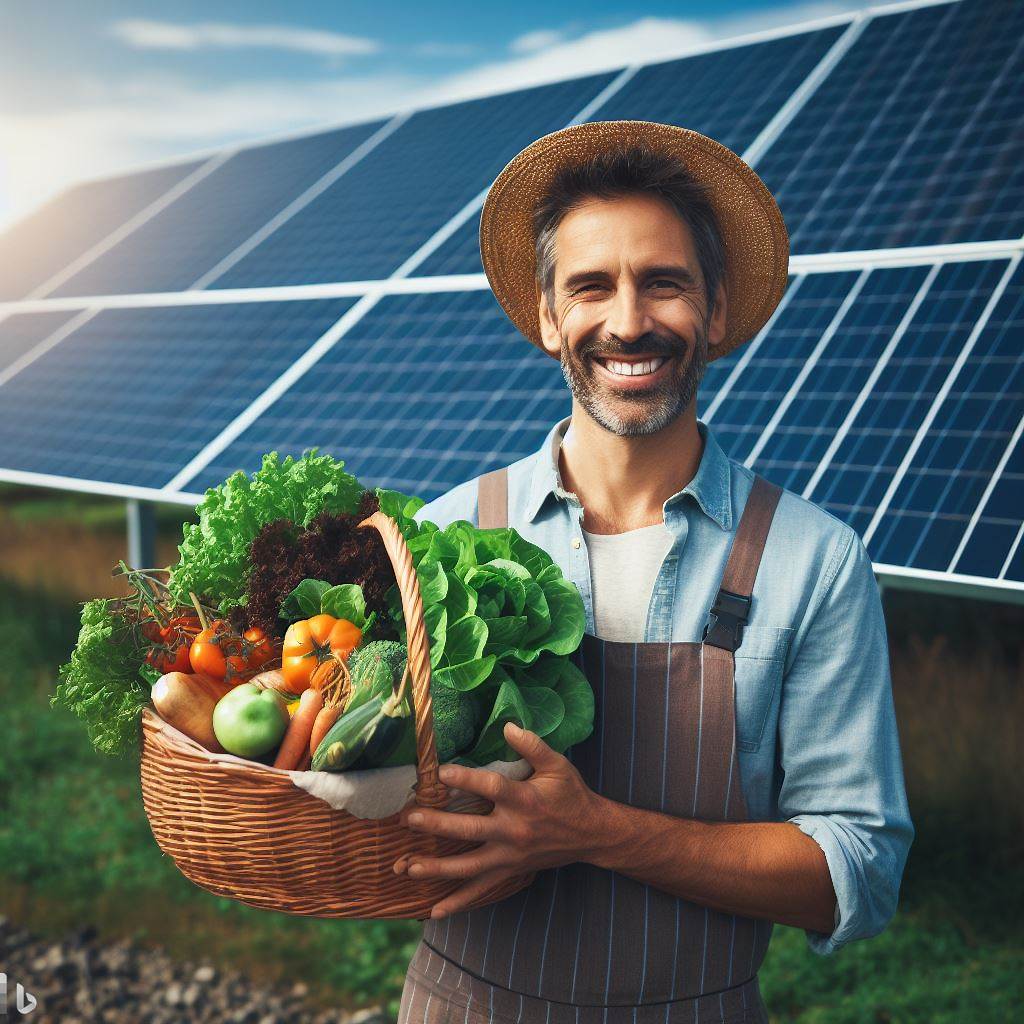Introduction
Modern farming techniques play a crucial role in ensuring sustainable agriculture and meeting the growing global food demand.
These techniques have revolutionized farming practices, leading to increased productivity and efficiency.
In this section, we will provide an overview of the importance of modern farming techniques and their adoption by US farmers.
Importance of modern farming techniques
Modern farming techniques have become indispensable due to their numerous benefits.
These techniques enable farmers to maximize crop yield, minimize resource waste, and reduce the environmental impact of farming.
By adopting advanced machinery, precision agriculture, and biotechnology, farmers can optimize their farming practices, resulting in higher production and income.
Furthermore, modern techniques also contribute to food safety by improving pest and disease control and enhancing the quality of agricultural products.
Overview
The topic under discussion is the modern farming techniques adopted by US farmers.
The United States is one of the world’s largest agricultural producers, and its farmers have embraced innovative farming practices to remain competitive and sustainable.
In recent years, there has been a significant shift towards precision agriculture, which utilizes technologies like GPS, remote sensing, and data analytics to optimize farming operations.
Additionally, the use of genetically modified crops and advanced irrigation systems has become widespread, leading to increased crop productivity and water efficiency.
In addition, modern farming techniques have revolutionized the agricultural sector, empowering farmers to achieve higher yields, reduce resource usage, and mitigate environmental challenges.
The US farming community has embraced these techniques, playing a vital role in ensuring food security and sustainable agriculture.
In the following section, we will delve deeper into specific modern farming techniques adopted by US farmers and explore their impact on the industry.
Precision Agriculture
Precision agriculture, also known as precision farming, is a modern farming technique that revolutionizes the way farmers cultivate crops and raise livestock.
It involves the use of advanced technology and sensors to optimize efficiency and productivity.
In this section, we will explore the definition, explanation, benefits, advantages, and examples of precision agriculture techniques.
Definition and Explanation
Precision agriculture is an approach that leverages cutting-edge technology to accurately manage and monitor agricultural practices.
It enables farmers to make data-driven decisions and customize their farming techniques based on specific field conditions.
Use of Technology and Sensors
Technology plays a pivotal role in precision agriculture. Farmers utilize a range of tools such as GPS (Global Positioning System), GIS (Geographic Information System), remote sensing, drones, and sensors.
These technologies provide farmers with real-time data about soil moisture, nutrient levels, pest infestations, and crop growth patterns.
Benefits and Advantages
- Increased Efficiency: Precision agriculture minimizes guesswork and optimizes resource allocation, leading to improved efficiency in farming operations. Farmers can precisely apply fertilizers, pesticides, and water, reducing wastage and environmental impact.
- Enhanced Productivity: By identifying and addressing specific issues within a field, precision agriculture helps maximize crop yields. Farmers can detect early signs of diseases or nutrient deficiencies, allowing them to take timely corrective measures.
- Cost Savings: With precision agriculture, farmers can significantly reduce input costs by using resources more efficiently. By minimizing overuse of fertilizers and pesticides, they conserve resources and save money.
- Environmental Sustainability: Precision agriculture promotes sustainable practices by reducing the negative impact on the environment. By minimizing chemical applications, farmers maintain soil health, prevent water contamination, and preserve biodiversity.
Precision Agriculture Techniques
- Variable Rate Technology (VRT): VRT enables farmers to vary input application rates across a field based on specific requirements. This allows for targeted application of fertilizers, seed, and irrigation, resulting in optimal crop growth and reduced input wastage.
- Remote Sensing: Remote sensing techniques involve the use of satellites, drones, or aircraft to collect data about crop health, soil conditions, and weather patterns. This information helps farmers make informed decisions regarding irrigation, pest management, and yield monitoring.
- Automated Systems: Automation plays a crucial role in precision agriculture. Farm equipment like self-driving tractors and planting machines can perform tasks with precision and accuracy. Automated systems reduce labor requirements and enhance operational efficiency.
- Crop Monitoring: Sensors embedded in the fields collect data on soil moisture, temperature, and nutrient levels. This information is transmitted to farmers who can adjust irrigation schedules and nutrient application accordingly.
- Data Analytics: Precision agriculture relies on data analysis to make informed decisions. Farmers can utilize software tools to analyze data collected from various sources and gain insights on crop health, growth patterns, and resource management.
In closing, precision agriculture embraces technology to revolutionize farming practices.
It offers numerous benefits such as increased efficiency, enhanced productivity, cost savings, and environmental sustainability.
Through techniques like variable rate technology, remote sensing, automated systems, crop monitoring, and data analytics, farmers can optimize their operations and achieve better outcomes.
The adoption of precision agriculture techniques by US farmers is transforming the agricultural landscape, ensuring sustainable farming for future generations.
Read: Diversity in US Farming: Women & Minorities in Agriculture
Vertical Farming
Definition and Explanation
Vertical farming refers to the practice of growing crops in vertically stacked layers, using techniques such as hydroponics or aeroponics.
It involves cultivating plants in a controlled environment, typically indoors, without the need for soil.
Indoor Farming Techniques
Vertical farming utilizes various indoor farming techniques to optimize plant growth and maximize space.
These techniques include hydroponics, which involves nurturing plants in nutrient-rich water, and aeroponics, which involves growing plants in air or mist.
Additionally, artificial lighting is used to provide the necessary amount of light for photosynthesis.
Benefits and Advantages
- Increased Crop Yield: Vertical farming allows farmers to grow multiple layers of crops, resulting in a higher yield per square foot compared to traditional farming methods.
- Year-Round Production: With controlled environments, vertical farming enables year-round production, reducing dependence on seasonal changes and weather conditions.
- Conservation of Resources: This technique reduces the need for land, water, and pesticides, making it a more sustainable and environmentally friendly choice.
- Reduced Transportation: By bringing farming closer to urban areas, vertical farming can drastically reduce transportation distances, lowering carbon emissions.
- Enhanced Food Security: Vertical farming can contribute to food security by providing a local and consistent supply of fresh produce, reducing reliance on imports.
- Protection from External Factors: Being indoors, vertical farms are shielded from extreme weather events, pests, diseases, and other external factors that can affect traditional farming.
Examples of Vertical Farming Practices
- AeroFarms: AeroFarms is an indoor vertical farming company that produces leafy greens using aeroponics. They claim to utilize 95% less water than traditional farming methods.
- Farm.One: Farm.One is a vertical farm located in New York City. They grow a wide range of herbs, microgreens, and edible flowers using hydroponics in a controlled environment.
- Plenty: Plenty is a vertical farming company based in California. They use vertical stacking and LED lighting to grow crops without soil, providing fresh produce to nearby urban areas.
- Sky Greens: Sky Greens, based in Singapore, is known for their innovative vertical farming system. They use rotating racks to expose plants to sunlight and reduce energy consumption.
In fact, vertical farming offers a sustainable and efficient solution to modern farming challenges.
By utilizing indoor farming techniques, it maximizes crop yield, conserves resources, and enhances food security.
With the emergence of innovative companies like AeroFarms, Farm.One, Plenty, and Sky Greens, vertical farming practices are gaining popularity worldwide.
This approach has the potential to revolutionize agriculture and ensure a greener and more resilient future.
Read: Exploring the Diverse Crops of American Farmlands
Hydroponics
Definition and explanation
Hydroponics is a modern farming technique that involves growing plants in a soil-less environment.
It relies on a nutrient-rich water solution to provide plants with the necessary elements for growth.
This method has gained popularity among US farmers due to its numerous benefits and advantages.
Benefits and advantages
One of the main benefits of hydroponics is its ability to maximize space utilization.
Since plants are grown without soil, they can be stacked vertically, allowing farmers to grow more crops in a smaller area.
This is particularly advantageous in urban areas where land is limited and expensive.
Hydroponics also eliminates the need for traditional farming practices such as tilling and weeding.
Transform Your Career Today
Unlock a personalized career strategy that drives real results. Get tailored advice and a roadmap designed just for you.
Start NowWithout soil, there are no weeds to compete with the plants for nutrients and water.
This reduces the labor required for maintaining the crops and significantly decreases the use of herbicides.
Moreover, hydroponic systems allow for precise control over the growing conditions.
Farmers can adjust the nutrient levels, pH levels, and temperature to create an optimal environment for plant growth.
This leads to faster growth rates, higher yields, and better quality produce.
Examples of hydroponic farming in the US
In the US, there are several examples of successful hydroponic farming operations.
Gotham Greens, headquartered in Brooklyn, New York, is a pioneering urban agriculture company that specializes in hydroponic greenhouse farming.
They grow a variety of leafy greens and herbs in their state-of-the-art facilities.
AeroFarms, based in Newark, New Jersey.
They have developed an indoor vertical farming system that utilizes aeroponic technology, a type of hydroponics that mist nutrients onto plant roots.
AeroFarms focuses on growing leafy greens and aims to revolutionize agriculture by transforming abandoned warehouses into productive farms.
BrightFarms, located in Pennsylvania, is yet another successful hydroponic farming company in the US.
They specialize in building and operating greenhouse farms near supermarkets, enabling them to deliver freshly harvested produce to the stores within 24 hours.
By reducing the distance traveled, they provide customers with more flavorful and nutritious produce.
In short, hydroponics is a modern farming technique that offers numerous benefits and advantages to US farmers.
It maximizes space utilization, reduces labor, and allows for precise control over growing conditions. Examples of hydroponic farming in the US include Gotham Greens, AeroFarms, and BrightFarms.
These innovative companies are revolutionizing agriculture and providing consumers with fresh and nutritious produce.
Read: Trade Wars & Tariffs: Effects on US Farmers and Crops

Automated Machinery
Definition and explanation
Automated machinery, also known as autonomous or self-driving machinery, refers to the use of advanced technology and robotics in farming activities.
These machines are designed to perform tasks with little or no human intervention, making farming more efficient and productive.
Use of robotics and artificial intelligence
The use of robotics and artificial intelligence (AI) in modern farming has revolutionized the industry.
Robots equipped with AI technology can analyze data, make decisions, and perform tasks that were previously only possible for human farmers.
This technology enables machines to adapt to changing conditions, optimize performance, and increase yields.
Benefits and advantages
The adoption of automated machinery in farming offers numerous benefits and advantages. Firstly, it saves time and labor.
Farmers can automate repetitive and time-consuming tasks, allowing them to focus on more critical activities. This efficiency leads to increased productivity and reduced costs.
Additionally, automated machinery improves precision and accuracy. Robots can perform tasks with consistent precision, ensuring uniformity in seeding, spraying, and harvesting.
This precision leads to better crop quality and higher yields.
Moreover, automated machines can work day and night, optimizing the use of resources and increasing productivity.
Examples of automated machinery in US farming
One example of automated machinery in US farming is the use of autonomous tractors.
These tractors can be programmed to perform tasks such as plowing, planting, and fertilizing without the need for human intervention.
They are equipped with GPS technology, sensors, and AI algorithms to navigate the fields and perform tasks with precision.
Another example is the use of drones in farming.
Drones can be used for various purposes, including monitoring crop health, applying pesticides, and assessing field conditions.
Equipped with cameras and AI software, drones can collect data and provide real-time insights to farmers, allowing them to make informed decisions and take timely actions.
Robotic milking systems are also being adopted in dairy farming.
These systems automate the milking process, reducing the need for manual labor.
The robots can identify and attach to cows automatically, monitor milk quality, and adjust milking parameters accordingly.
Showcase Your Business Today
Reach thousands of readers actively exploring professional services. Publish your business profile and grow your audience now.
Publish NowThis technology not only improves efficiency but also enhances animal welfare.
In greenhouse farming, automated machinery plays a crucial role in maintaining optimal growing conditions.
Climate control systems, equipped with sensors and AI algorithms, monitor temperature, humidity, and light levels.
They can automatically adjust environmental factors to create the ideal growing conditions for crops, maximizing yields and reducing energy consumption.
Overall, the use of automated machinery in US farming has transformed the way farmers operate.
It has brought numerous benefits, including increased productivity, improved precision, and reduced labor requirements.
As technology continues to advance, we can expect further innovations in automated machinery, revolutionizing the agricultural industry.
Read: The Next Generation: Youth and Farming in the USA
Genetic Engineering: Revolutionizing Modern Farming
Definition and Explanation
Genetic engineering, also known as genetic modification, is the process of altering an organism’s DNA using biotechnology techniques.
It involves manipulating specific genes to produce desired traits.
Biotechnology in Farming
Biotechnology plays a crucial role in modern farming by using genetic engineering to enhance crop and livestock traits.
It allows scientists to introduce new characteristics and improve overall productivity.
Benefits and Controversies
Genetic engineering brings numerous benefits to agriculture.
It boosts crop yield, enhances nutritional value, and improves resistance to pests, diseases, and environmental conditions.
However, it also sparks controversies regarding potential health risks and ethical concerns.
Examples of Genetically Modified Crops in the US
- Corn (Maize): Genetically modified corn varieties exhibit traits like herbicide tolerance, insect resistance, and increased nutritional value.
- Soybean: Genetically modified soybeans are designed to resist herbicides and pests, increasing productivity.
- Cotton: Genetic engineering has created insect-resistant cotton, reducing the need for chemical insecticides.
- Canola: Genetically modified canola possesses herbicide resistance, providing farmers with better weed control options.
- Papaya: Genetically modified papaya has been developed to resist the devastating effects of the papaya ringspot virus.
Genetic Engineering in Agriculture: Benefits, Controversies, and Regulation
Genetic engineering revolutionizes agriculture by enhancing crop yield, improving nutritional content, and reducing environmental impact through sustainable practices.
Farmers utilize biotechnology to create desirable traits, minimizing crop loss and ensuring higher harvests in challenging conditions.
Genetic engineering addresses malnutrition by developing crops with elevated essential vitamins and minerals, improving public health.
This technique also reduces the environmental impact of agriculture by engineering crops resistant to herbicides, promoting sustainable practices.
Despite controversy, strict regulatory frameworks ensure the safety of genetically modified crops through extensive testing and scientific evaluations.
Critics raise concerns about unforeseen health effects and negative impacts on biodiversity, but regulations aim to minimize risks.
Genetic engineering, integral to modern US farming, offers significant benefits, paving the way for sustainable and efficient food production.
Gain More Insights: Exploring the Role of Agricultural Engineers in the USA
Conclusion
Modern farming techniques have revolutionized the agricultural industry in the United States.
These techniques, including precision farming, genetically modified crops, and vertical farming, have significantly improved crop yields and reduced resource consumption.
The adoption of modern farming techniques has had a positive impact on the US agriculture sector.
Crop productivity has increased, leading to greater food production to meet the growing population’s needs.
These techniques have helped minimize environmental impacts by reducing the use of pesticides and conserving water resources.
The future prospects for advancement in modern farming techniques are promising.
With the advent of technologies like artificial intelligence, automation, and IoT, farmers can further optimize their farming practices.
These advancements will lead to more efficient resource utilization and increased sustainability.
To encourage the adoption of modern techniques, it is essential to provide support and incentives to farmers.
Government policies that promote research and development in agricultural technologies, along with financial assistance programs, can encourage farmers to adopt new methods.
Awareness campaigns and knowledge-sharing platforms can educate farmers about the benefits and ease of implementing modern farming techniques.
The adoption of modern farming techniques has transformed the US agricultural landscape.
Continued advancements and increased adoption will not only benefit individual farmers but also contribute to global food security and environmental sustainability.
[E-Books for Sale]
The Big Book of 500 High-Paying Jobs in America: Unlock Your Earning Potential
$19.99 • 500 High-Paying Jobs • 330 pages
Explore 500 high-paying jobs in America and learn how to boost your career, earn more, and achieve success!
See All 500 High-Paying Jobs of this E-Book
1001 Professions Without a Degree: High-Paying American Jobs You Can Start Now
$19.99 • 1001 Professions Without a Degree • 174 pages
Discover 1001 high-paying jobs without a degree! Unlock career tips, skills, and success strategies for just $19.99!




